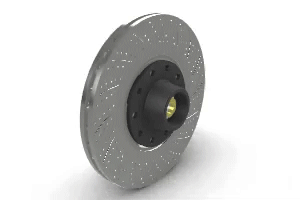Snapshots
| Toolbar | Menu | Panel Gear Menu |
|---|---|---|
|
|
Panels Snapshots |
Snapshots |

The Snapshots command saves and restores:
Layers
Lights
Mesh Modifiers
Objects
Rendering
Dithering and Color Adjustment
Views
Camera (Including Focal Blur in the Raytraced display mode)
Snapshots panel
To create a snapshot
- Select a viewport.
-
Make sure no snapshot is in selection.
-
Click the Save as
button.
- Type a name for the snapshot.
- Select the parameters to include in the snapshot.
- Create a new snapshot when an existing snapshot is selected. Type a different name for the new snapshot. It will be added behind the selected snapshot.
To update a snapshot
- Select a snapshot name.
-
Click the Save
button.
- Choose to replace the existing snapshot.
To restore a snapshot
-
Double-click a snapshot name.
- When restoring a snapshot to a non-saved view, you will be prompted to save a snapshot.
Show Details...
Reports what information will be lost if you answer "No".
Yes
Saves a snapshot of the current model state before restoring the snapshot.
No
Restores the snapshot and ignores the unsaved information.
Cancel
Stops restoring the snapshot.
Do not show this message again
Saves the current settings and turns off the dialog display.
To turn the message back on
See also: ResetMessageBoxes command.
Toolbar
 Save As
Save As
Saves and names a new snapshot.
 Delete
Delete
Deletes the selected snapshot
 Restore
Restore
Restores the selected snapshot.
- Double-click a snapshot name to restore.
 Restore partial
Restore partial
Restores a partial list of the selected snapshot.
 Edit
Edit
Reviews or deletes the items stored in the selected snapshot.
In the Delete Snapshot Data dialog box...
-
Click
 to delete the data.
to delete the data. -
Before clicking , click to restore all data deletions.
 Import from 3dm file
Import from 3dm file
Imports Snapshots from a Rhino file.
 Move up
Move up
Moves the selected item up in the list.
 Move down
Move down
Moves the selected item down in the list.
-
You can also use drag and drop to reorder items.
- Move up and Move down buttons are only available with Custom Order.
 Animation
Animation
Animates the restoration of the snapshot. When you change to a different snapshot, the snapshot transitions smoothly from the current conditions to the selected snapshot. This allows you to see the transition and can also be used to build presentations.
- Double-click the snapshot thumbnail to start the animation.
Note for view animation
Snapshots do not animate between parallel (ortho) and perspective views because perspective views have a lens length that does not exist in parallel views. You will only see smooth view transition between parallel views or between perspective views, but not a mix.
Animation Settings
 Animate snapshot restoration
Animate snapshot restoration
Play animation when restoring a snapshot.
 Constant time ____ frames
Constant time ____ frames
When:
Constant time = 100 frames
Delay between frames = 10 milliseconds
The animation takes 10 x 100 = 1000 milliseconds (1 second).
 Constant speed ____ units per frame
Constant speed ____ units per frame
When:
Constant speed = 0.1 units per frame
Delay between frames = 10 milliseconds
If a view moves 20 units between snapshots, the animation takes 10 x 20 / 0.1 = 2000 milliseconds (2 seconds).
Delay between frames ____ milliseconds
The delay time between frames.
While in slide show mode the following keys are active:
Space = Pause and resume.
Esc = Cancel the slide show.
◄ and ► = Step forwards and backwards through snapshots.
Slideshow Settings
Fullscreen
Floating view
Maximize active view
Repeat
Loop the animation.
Show each snapshot for <x> seconds
Set interval for displaying each snapshot.
Right-click context menu
View Mode
List
Displays named views as a list.
Thumbnails
Displays named views as thumbnail previews.
Sort By
Name Ascending
Sorts the list from A to Z.
Name Descending
Sorts the list from Z to A.
Clicking the name column header switches sorting order between ascending and descending.
Custom Order
Allows to sort the list using drag and drop, or the and
buttons on the toolbar.
Custom order can be remembered when switching to other sorting methods.
